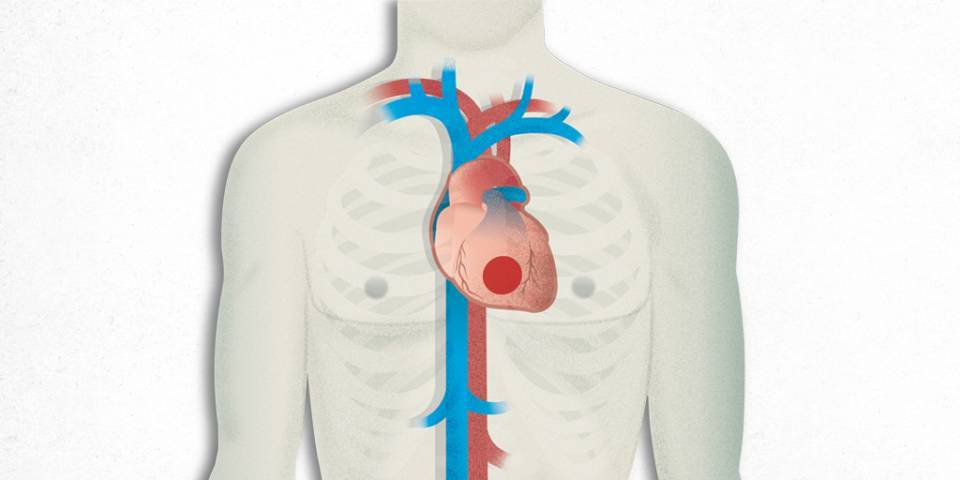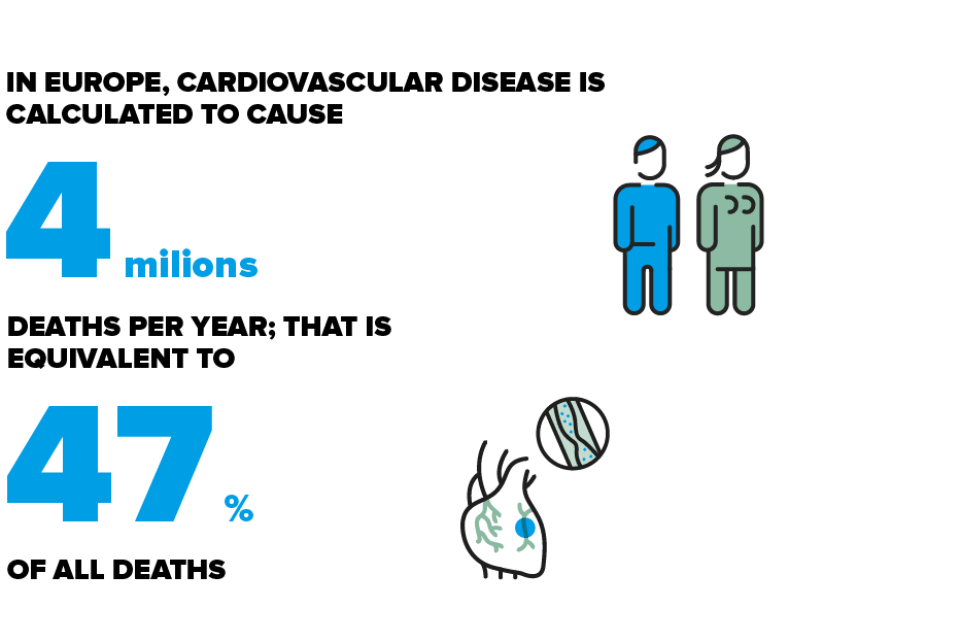28 November 2024
- What is it?
- Symptoms
- Risk factors
- Tests and diagnosis
- Treatment
- Disease evolution
- Living with disease
- Research lines
- Frequently asked questions
- Prevention
What is Ischemic Heart Disease, heart attack or angina pectoris?
An occluded coronary artery causes an inadequate supply of blood to the heart and produces angina pectoris or a heart attack. For both men and women, coronary heart disease or ischemic heart disease is one of the leading causes of death in the world. It is usually asymptomatic and can be prevented.
Ischaemic Heart Disease explained in first person
As doctors, we can be very helpful to patients, but what they do is really more important because it truly can improve their prognosis: give-up smoking; follow a balanced diet; lose weight, if needed, and do some exercise.
That life is enjoyed to the full, with great enthusiasm. It doesn’t matter that life goes on. We are normal people. We can do anything. It can be the same as, or even better than, before.
Ischaemic Heart Disease, also known as coronary heart disease, occurs when the blood flow to the heart muscle is reduced because of a partial or complete blockage of the arteries supplying it with blood.
If we consider the coronary arteries to be a system of tubes, as they progressively become blocked it means that the liquid flowing through them, in this case blood, does not reach its destination, the heart, correctly.
How many people are affected by Ischaemic Heart?
Ischaemic heart disease is a very common illness that affects a large part of the population in both developed and developing countries.
It is estimated that in the United States approximately 15.4 million people aged over 20 years have ischaemic heart disease, this represents 6.4% of the population (7.9% of men and 5.1% of women).
In Europe, cardiovascular disease is calculated to cause 4 million deaths per year; that is equivalent to 47% of all deaths.
The prevalence of ischaemic heart disease increases with age and is greater in men than women, even in the elderly. Studies show that coronary heart disease affects twice as many men and three times as many women when aged 65 to 94 years compared to those aged between 35 and 64 years old.
In men, ischaemic heart disease most typically manifests as an infarction (heart attack), while in women it usually presents as angina pectoris.
In developed countries the prevalence of ischaemic heart disease is currently tending to decrease, thanks to improved treatments and healthier lifestyles; nevertheless, the prevalence continues to increase in developing nations.
Either way, ischaemic heart disease is still the main cause of death among adults in both developing and more affluent countries.
Causes of Ischaemic Heart Disease
Ischaemic heart disease is caused by arteriosclerosis. Arteriosclerosis is chronic inflammation of the arteries that causes them to harden and accumulate cholesterol plaques (atheromatous plaques) on their walls. This leads to an increased risk of thrombus formation (stationary blood clots attached to blood vessel linings).
Arteriosclerosis can affect any of the arteries in the body and produces different symptoms depending on which organ is affected. If it occurs in arteries that carry blood to the brain, then it may cause a stroke or cerebrovascular accident; if it occurs in arteries supplying the legs, then it could translate into pain when walking; if it happens in arteries that deliver blood to the heart itself it may cause angina pectoris (chest pain) or a myocardial infarction (heart attack).
Difference between angina pectoris and an infarction

Angina pectoris (chest pain). Whenever a coronary artery is severely obstructed, normally when its passageway is reduced by over 75%, then secondary symptoms often start to appear due to the lack of oxygen reaching the heart muscle cells. This lack of blood supply manifests as chest pain, which usually arises upon making an effort. If the ischaemia is mild or short-lived, then the myocardium cells can survive the event.

Myocardial infarction (heart attack). If the lack of oxygen is more severe or long-lasting, then some of the heart’s cells may actually die; this is what is known as necrosis or myocardial infarction. Although the symptoms may be very similar, in the case of an infarction the pain is typically more intense or sustained.
The doctor will focus on two examinations to differentiate between the two conditions:

Electrocardiogram. For most cases of angina, an electrocardiogram only reveals any abnormalities if it is performed while the patient experiences chest pain. By contrast, in the case of an infarction, it is very likely that electrocardiogram results will include abnormal patterns, to varying degrees.

Blood analysis. Troponins are proteins found inside heart muscle cells. When the cells die (necrosis) their walls break open and these proteins are released into the blood stream. In the event of a heart attack a straightforward, rapid analytical test can be used to identify the presence of any troponins in the blood and confirm the diagnosis.
Types of angina pectoris or infarction
In function of the symptoms, one can discern between different types of angina or infarction:

Stable angina. Chest pain is chronic and appears regularly, is always brought on by the same amount of exercise and does not change as the months pass by. Patients tend to be very familiar with the symptoms. While Ischaemic Heart Disease always requires full attention, stable angina is less serious and can be treated effectively with medicines.

Acute coronary syndrome. This corresponds to irregular episodes of chest pain; they appear suddenly, when resting; the pain is much more intense or appears after increasingly less effort. This condition is more serious than stable angina and always requires a hospital stay and intensive treatment.
Substantiated information by:


Published: 20 February 2018
Updated: 20 February 2018
Subscribe
Receive the latest updates related to this content.
Thank you for subscribing!
If this is the first time you subscribe you will receive a confirmation email, check your inbox




